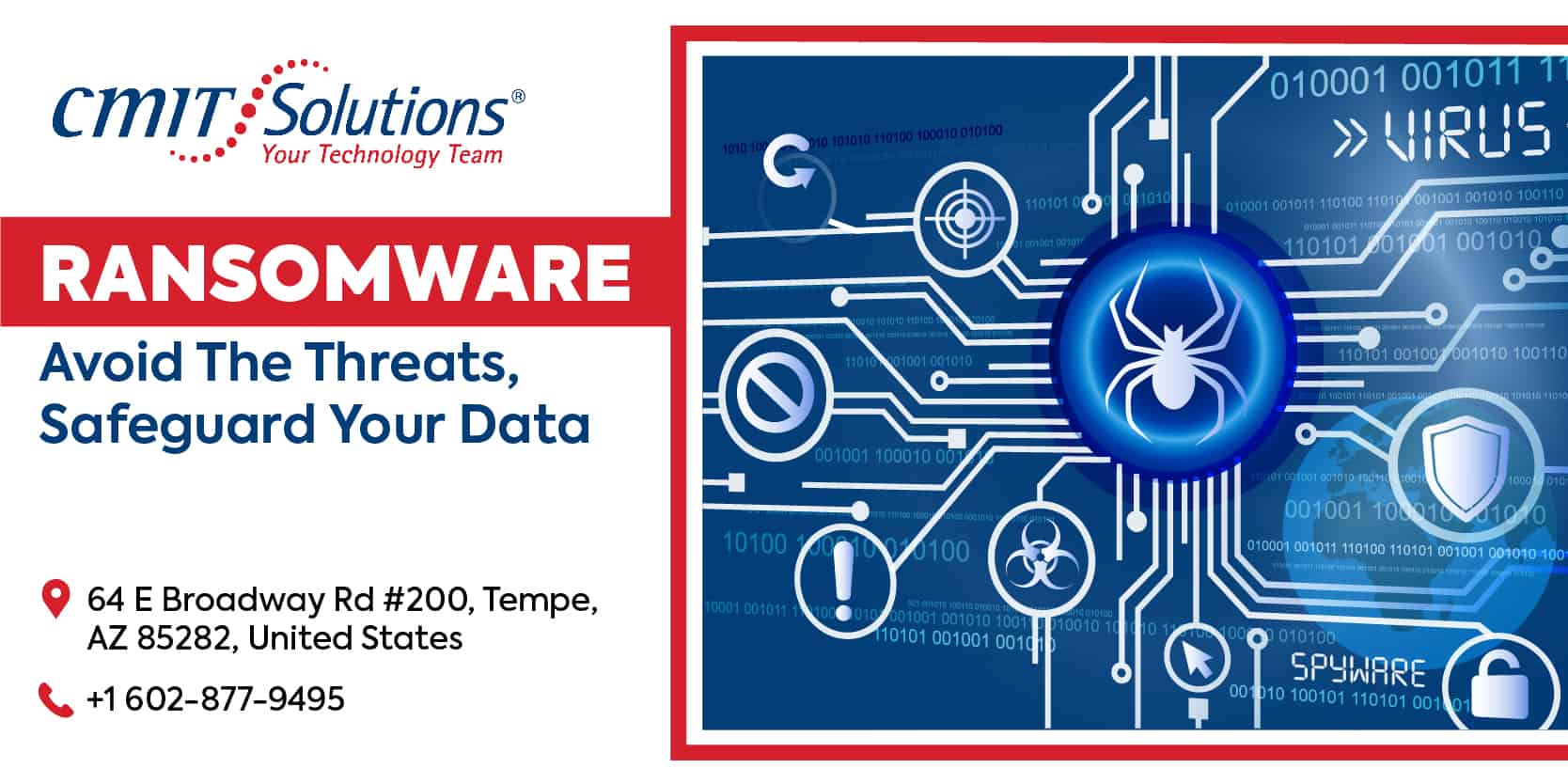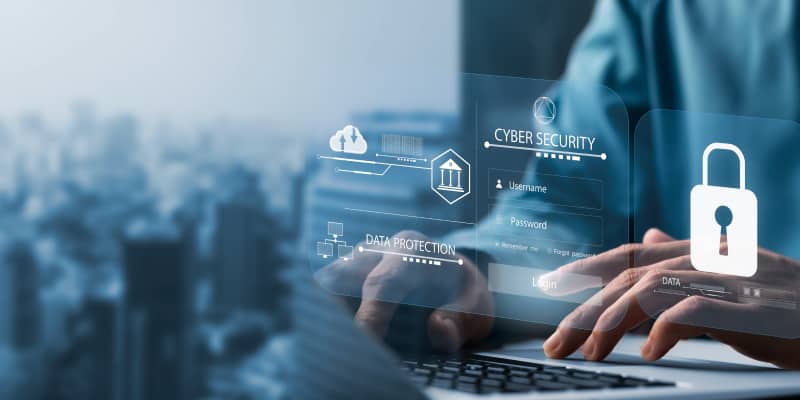Cyber threats can affect any organization, big or small, but it is of particular concern to small and medium-sized businesses
Small and medium-sized businesses (SMBs) are more concerned about other business matters, and cybersecurity threats are hardly on their list of worries. Also, smaller businesses often do not invest much in protecting their business, lack strict technological defense, and are less aware of security protocols. And, that is precisely why they are vulnerable to ransomware attacks. This is further confirmed by The Global State of Channel Ransomware report from Datto that states that small and medium-sized businesses are more prone to ransomware attacks.
Ransomware is a cybercrime where hackers hold your business’s entire data or the device for ransom. Most of the time, businesses are caught unawares when they login to their devices, only to find that their entire data and files have become hostage to cybercriminals who extort money in return for the data. From demanding ransoms in millions of dollars, cybercriminals also demand payments in bitcoins, gift cards, and other currencies.
So what happens if you refuse to pay? The data is lost forever!
Ransomware: The threat landscape and the key facts to know
Threats like ransomware are on the rise as cybercriminals exploit the digital landscape to find unique ways to steal data. Ransomware can be catastrophic to upcoming organizations that depend on their data to keep their businesses on the go.
One of the biggest threats of ransomware is that not many cybercriminals keep their end of the bargain. Not all of them remain true to their word and restore the hijacked data. In fact, there have been widespread incidents of re-extortion, permanent loss of data, and incidents of victims’ information being published despite paying the ransom.
Let us not forget that cybercriminals are geniuses who can adapt to the ever-evolving digital landscape and find every possible means to create new dangers.
To safeguard your organization’s business data from cybercrimes like ransomware, it is critical that you get to know more about it.
Some facts & figures about ransomware attacks:
- Ransomware attacks are on the rise. Some key findings from a study by DigitalDefense highlight that:
- 2020 saw a 238% increase in ransomware attacks on the financial sector.
- Ransomware payment has increased by 33% since 2020.
- A ransom attack can last up to fifteen days.
- Ransomware attacks cost an average downtime cost of more than $64,000.
- Nearly 50% of small businesses have upgraded their digital security, showing an increase in the awareness of ransomware attacks.
- The average cost of downtime exceeds the requested ransom by nearly 50 times.
- Hackers perceive businesses in the USA as potential targets because of the possibility of higher ransom payments.
- Work-from-home options and the increased adoption of cloud-based applications are making organizations more vulnerable to ransomware attacks.
- Ransomware payments increased by an unprecedented 467.5% in the third quarter of 2020.
- Ransomware recovery costs have doubled from approximately $761,000 in 2020 to $1.85 million in 2021.
Threats that dominate the current landscape:
- Infection vectors:
- Phishing emails.
- Software-as-a-Service (SaaS) applications.
- Windows end-point systems applications.
- Data exfiltration.
- Anti-detection components.
- Distributed Denial of Service (DDoS) attacks.
Other infection vectors include threats that:
- Deletes files regardless of whether the ransom was paid or not.
- Locks up cloud-based real-time backups.
- Targets smart devices.
2. Double extortion
A double extortion ransomware attack is when cybercriminals steal data besides encrypting files, thus demanding a ransom to return the data and threatening to leak the stolen information if an additional payment is not made. Double extortion became rampant in 2020, with more than fifteen such attacks in contrast to just one attack in 2019. Double extortion allows cybercriminals to put extra pressure on their victim organizations by demanding exorbitant amounts of money and exposing their sensitive data despite being paid.
To reiterate, not always these criminals maintain their word. Incidents in the recent past have also revealed that at least five attackers went against their word in honoring the ransom and leaked the stolen data.
The Impact of Ransomware Attacks
Regardless of the type of extortion or the cyber criminal’s core intent, the potential impact of ransomware is always much beyond the actual payout.
When hackers engage in digital extortion, they inflict more financial damage than they actually extort from the attack.
Many businesses report experiencing huge data loss and major downtime due to cyber attacks. Unfortunately, the outcomes are too expensive for these businesses, especially SMBs, where every hour of business counts. A recent study reveals that the average cost of downtime due to ransomware amounts to approximately $380,000 per incident.
To compound the problem further, continuous downtime can cause serious damage to the reputation and credibility of the organization and can cause a dent in customer trust. Being aware of the problem and taking adequate proactive measures to safeguard your business is the best step forward.
Countermeasures to prevent ransomware attacks
Preventive measures are always better than reactive measures. With ransomware becoming a major threat, SMBs can resort to simple but effective actions to avoid becoming yet another victim.
Organizations should invest in proper data security measures as much as they invest in new software for their business purposes. The scenario typically involves setting up security gateways and testing the tools for efficiency.
Here are some of the best online defense practices to protect your business from ransomware attacks:
- Upgrading the antivirus and antispam solutions.
- Creating an incident response plan to initiate when an attack occurs.
- Using top-grade email protection gateways.
- Keeping all software and hardware systems patched.
- Using ad-blocking software and disabling macro scripts.
- Using a proxy server for restricted internet access.
- Vetting and monitoring third parties with access to the organization’s network.
- Categorizing and separating organizational data.
- Creating backups for critical files.
- Protecting with firewalls, complex passwords, and anti-spyware.
- Using encryption to prevent unauthorized access to data.
Ransomware defense is all about preventing an attack in the first place. However, if they do happen despite a stable security framework, it is critical to have a response strategy ready in order to reduce the impact of the attack.
Important steps to follow in case of a ransomware attack:
- Disconnect the infected system immediately.
- Assess the affected data to report the theft of sensitive information.
- Determine the availability of a decryptor.
- Use backups to restore critical files.
- Report the attack to the local FBI field offices or the Internet Crime Complaint Centre.
Safeguard your business with CMIT protection
Creating a proven security framework might seem overwhelming, but it should never be overlooked. CMIT Solutions is dedicated to providing the most advanced protection that encompasses every single aspect of your business. Our ransomware protection is multi-layered, responsive, and reliable. Get the CMIT protection and stay up and running without the fear of ransomware attacks. Call us at @1.602.877.9495 to know how we can create the perfect cybersecurity solution for your business.
Our IT Services
| Managed IT Services | Cybersecurity | Productivity Applications |
| IT Support | Cloud Services | Network Management |
| Compliance | Data Backup | Unified Communications |
| IT Guidance | IT Procurement |




